Discover the rich, authentic flavors of Sapa through a local food tour that takes you beyond tourist spots into the kitchens and markets of Vietnam’s ethnic communities. From herbal hotpots and smoky grilled meats to sticky rice cooked in bamboo, every dish tells a story of culture, tradition, and mountain life.
TABLE OF CONTENTS
1
Why Sapa Is a Unique Food Destination
The Cultural Melting Pot of Ethnic Cuisine (Hmong, Dao, Tay)
Farm-to-Table Traditions in the Misty Mountains
Why Food in Sapa Is Different from Hanoi or Saigon
2
Morning Bites: Start Your Day Like a Sapa Local
Hearty Bowls of “Thang Co” at the Local Market
Sticky Rice with Sesame or Grilled Corn from Street Vendors
Where to Go: Sapa Central Market, Bac Ha (on Sundays)
3
Street Snacks and Midday Eats
Try “Cap Nach” Pork Grilled on Bamboo Skewers
Fresh Bamboo-Tube Rice (Com Lam) Cooked Over Fire
Sample Smoked Buffalo Meat and Fermented Pickles
4
Best Local Dishes to Try on a Food Tour
Thang Co - A Traditional Hmong Horse Meat Stew
Salmon Hotpot - A Sapa Specialty in Cold Weather
Seven-Color Sticky Rice (Xoi Bay Mau) for Special Occasions
5
Where to Eat Like a Local in Sapa
Family-Owned Eateries and Ethnic Home Kitchens
Recommended Food Streets and Markets
How to Find Local Food Tours with Tribal Guides
6
Sapa’s Traditional Drinks
Corn Wine (Ruou Ngo) - Drink with Caution
Herbal Teas from the Mountains
Coffee with a View - Hidden Cafés in the Hills
7
Responsible Eating in Sapa
Eat Ethically: Support Indigenous Families and Small Vendors
Avoid Tourist Traps: What to Watch For
Be Culturally Respectful When Dining in Homes
8
FAQs About Sapa Food Tours
Is It Safe to Eat Street Food in Sapa?
Can Vegetarians or Pescatarians Enjoy the Local Cuisine?
Do You Need a Guide or Can You DIY?
9
Final Thoughts: Taste the Real Sapa
Why Sapa’s Food Is About More Than Just Flavor
A Journey Through Culture, Identity, and Tradition
What to Pair Your Food Tour With (Trekking, Homestays)
Why Sapa Is a Unique Food Destination
The Cultural Melting Pot of Ethnic Cuisine (Hmong, Dao, Tay)
Sapa is more than just stunning rice terraces and cool mountain air - it’s also home to a diverse range of ethnic minority groups whose culinary traditions go back generations. Each group, from the Hmong to the Dao and Tay, brings distinct flavors, ingredients, and cooking styles to the table. From black chicken soup infused with medicinal herbs to sticky rice in bamboo, the food in Sapa reflects the deep cultural roots of its people.
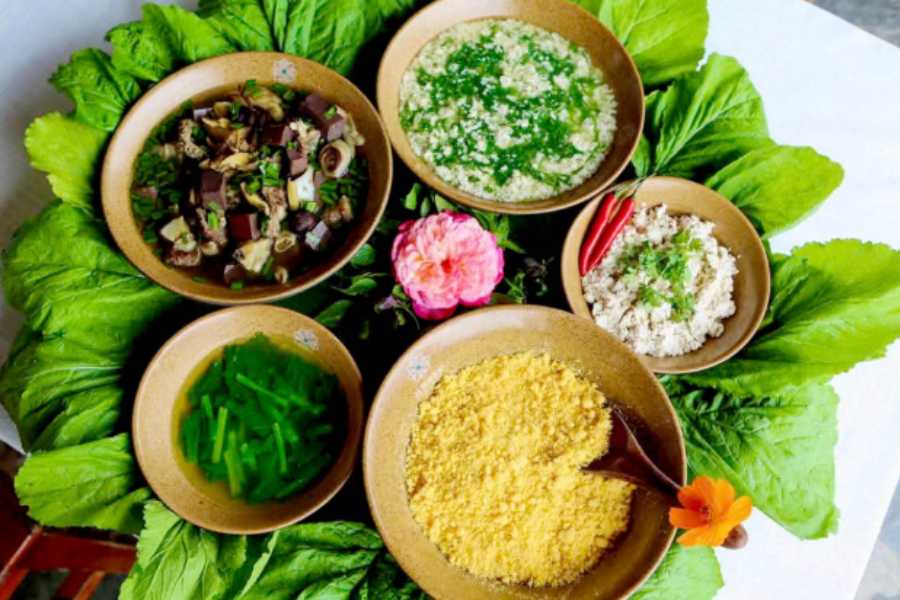
Farm-to-Table Traditions in the Misty Mountains
Much of Sapa’s cuisine is based on what’s grown, raised, or foraged locally. Farmers harvest fresh herbs from forest edges, raise pigs and chickens in backyard gardens, and cultivate rice and corn on steep hillsides. Many dishes are cooked over wood fires, adding a rich smokiness. Meals here often feel like a direct connection to the land - simple, hearty, and full of natural flavor.

Why Food in Sapa Is Different from Hanoi or Saigon
Unlike the bustling street food scenes of Hanoi or Saigon, Sapa offers a more rustic and homegrown approach to eating. There's less reliance on sugar and oil, and more focus on natural ingredients and slow-cooked methods. Dishes here are often seasonal, influenced by elevation and Sapa weather, and rarely found outside the region. Eating in Sapa is not just about flavor - it’s about discovering the story behind every ingredient and the community that made it.
Morning Bites: Start Your Day Like a Sapa Local
Hearty Bowls of “Thang Co” at the Local Market
For a truly local breakfast experience, join the early morning crowd at Sapa’s market stalls for a steaming bowl of thang co. This traditional Hmong dish is made with horse meat and seasoned with more than a dozen native herbs and spices. While it may be an acquired taste for some, it's a cultural staple in the highlands and a warm, filling way to start the day - especially during the colder months.
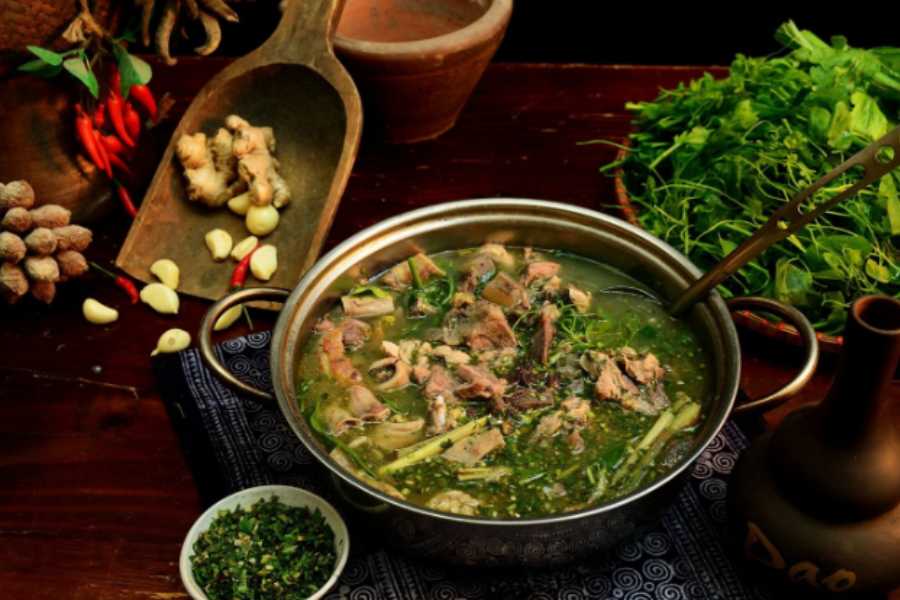
Sticky Rice with Sesame or Grilled Corn from Street Vendors
If you're not quite ready for thang co, go for a lighter, more approachable breakfast with colorful sticky rice (xoi ngu sac) topped with roasted sesame seeds and a pinch of salt. You’ll also see locals snacking on grilled corn - sweet, smoky, and charred just right over roadside charcoal grills. These quick bites are simple, satisfying, and easy to find around street corners or bus stops.
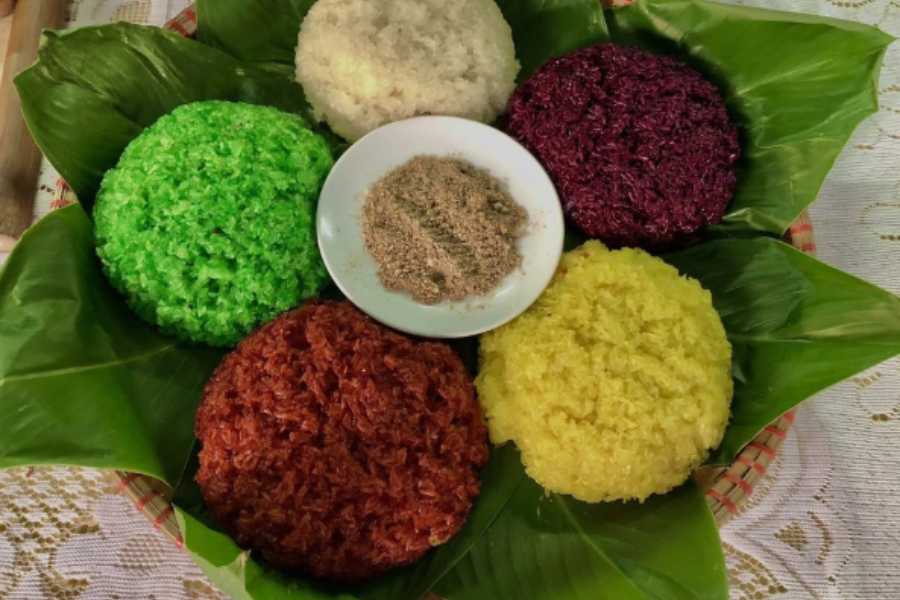
Where to Go: Sapa Central Market, Bac Ha (on Sundays)
Sapa Central Market is the go-to spot for daily local food, especially early in the morning when vendors are busiest. For an even more immersive experience, plan a Sunday trip to Bac Ha Market, about 2.5 hours from Sapa. This vibrant market is one of the largest ethnic gatherings in the region, where locals not only shop but also share breakfast, trade goods, and connect over food.

Street Snacks and Midday Eats
Try “Cap Nach” Pork Grilled on Bamboo Skewers
For a savory midday treat, seek out cap nach pork - a local delicacy made from free-range pigs raised by ethnic families in the mountains. The pork is marinated with native spices, skewered on bamboo sticks, and grilled over open flames until it’s crispy on the outside and juicy inside. Often served with dipping sauce and herbs, it’s a favorite street food among locals and visitors alike.
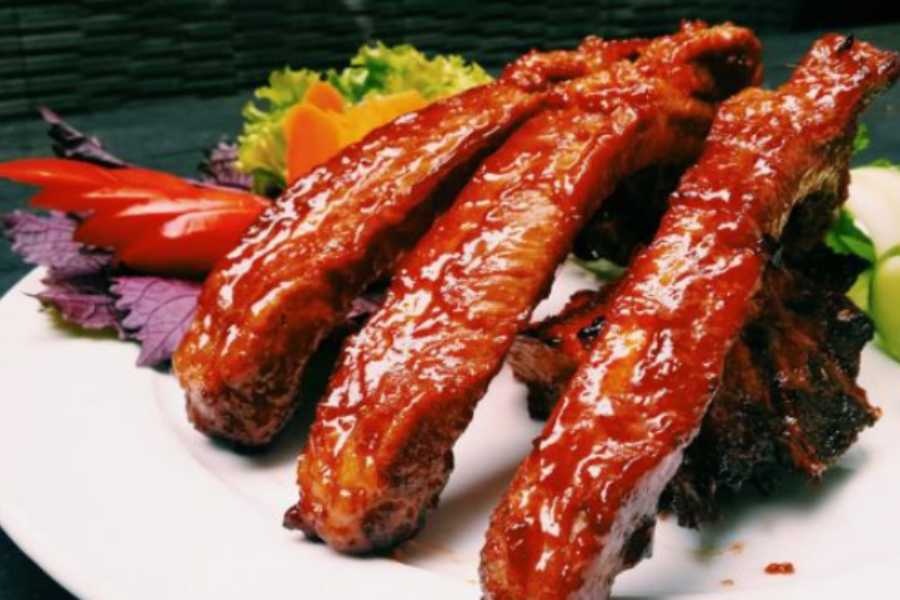
Fresh Bamboo-Tube Rice (Com Lam) Cooked Over Fire
A simple yet iconic dish, com lam is sticky rice packed into young bamboo tubes and slowly roasted over a wood fire. This cooking method infuses the rice with a smoky, earthy flavor. Once cooked, the outer bamboo is peeled away, revealing a warm, fragrant cylinder of rice that pairs beautifully with grilled meats or spicy pickled vegetables. It's sold by roadside vendors and at small market stalls.
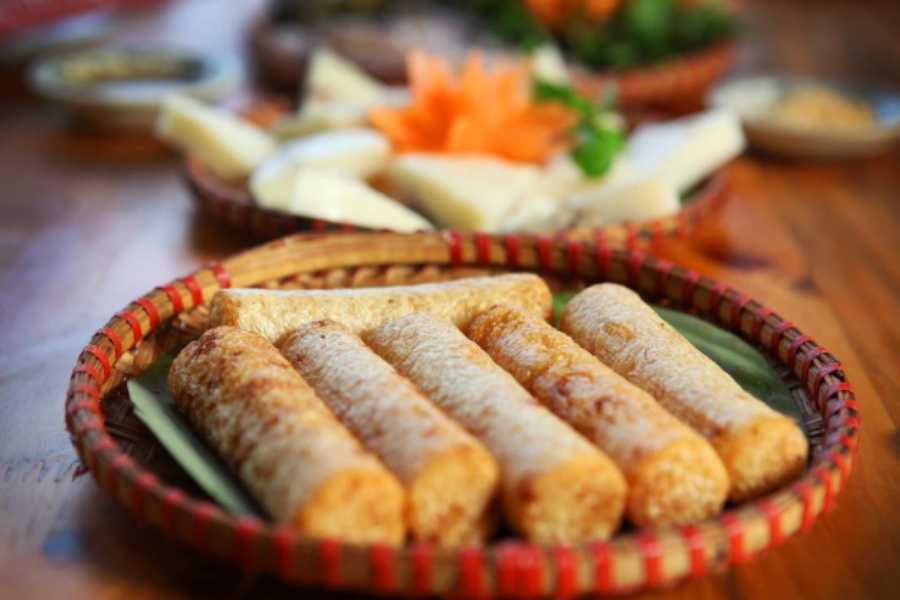
Sample Smoked Buffalo Meat and Fermented Pickles
For something more adventurous, try slices of smoked buffalo meat - a specialty of the Black Hmong and Tay people. The meat is marinated with salt, chili, and forest herbs, then dried and smoked for days, giving it a deep, rich flavor. Pair it with fermented mustard greens or pickled bamboo shoots for a true taste of Sapa’s mountain pantry. These items are often sold in bundles or vacuum packs, making them great edible souvenirs as well.
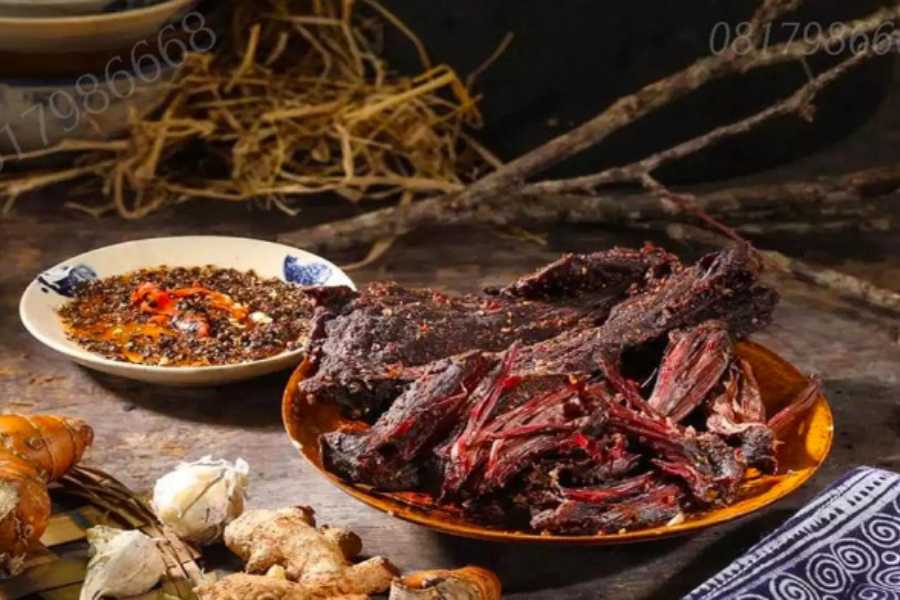
Best Local Dishes to Try on a Food Tour
Thang Co - A Traditional Hmong Horse Meat Stew
Thang Co is one of the most iconic and culturally significant dishes in Sapa. Originating from the Hmong people, this hearty stew is made using horse meat and organs, simmered for hours with a bold mix of cardamom, cinnamon, lemongrass, and other highland herbs. It's usually served in large communal pots during festivals or at weekend markets. The flavors are earthy and intense - best suited for adventurous eaters looking to experience truly local cuisine.

Salmon Hotpot - A Sapa Specialty in Cold Weather
Thanks to the region’s cool climate and clean water, Sapa has become one of the few places in Vietnam where salmon is farmed. The salmon hotpot is a warming dish often enjoyed in the evening when the temperature drops. Fresh pink slices of salmon are cooked right at the table in a bubbling broth flavored with ginger, dill, and local herbs, accompanied by vegetables, tofu, and rice noodles. It’s a comforting, communal meal perfect for sharing.
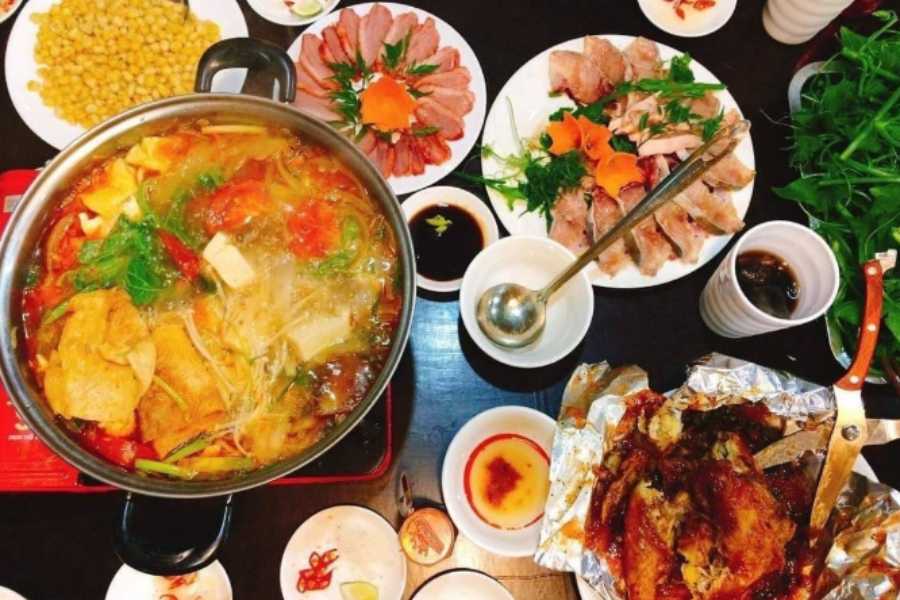
Seven-Color Sticky Rice (Xoi Bay Mau) for Special Occasions
Xoi bay mau, or seven-color sticky rice, is a visually stunning dish made using natural plant-based dyes like magenta leaves, turmeric, and indigo. Each color represents a different blessing in life - health, happiness, peace, etc. Prepared by the Nung and Tay ethnic groups, this sticky rice is typically served during festivals, weddings, or New Year celebrations. Mild in flavor but rich in symbolism, it’s often enjoyed with sesame salt, grilled meats, or simply on its own.
Where to Eat Like a Local in Sapa
Family-Owned Eateries and Ethnic Home Kitchens
For an authentic taste of Sapa, skip the tourist restaurants and head into family-run eateries or arrange a meal with an ethnic minority host. Many Hmong, Dao, and Tay families open their kitchens to travelers through community-based tourism programs. Meals are cooked over wood fires using homegrown ingredients, and you're often invited to sit down on a bamboo mat to share food, stories, and rice wine. These experiences not only offer flavorful dishes but also a chance to connect with local culture in a meaningful way.
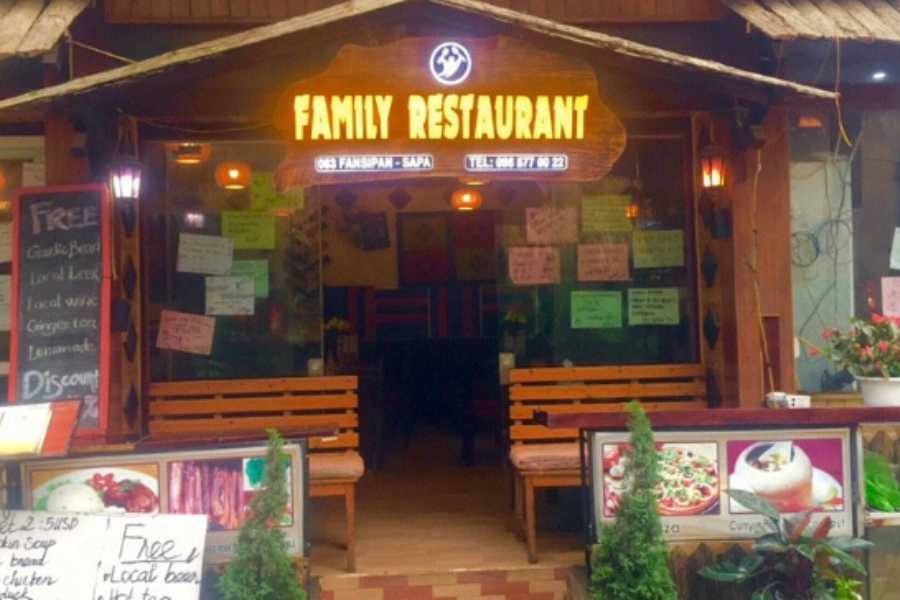
Recommended Food Streets and Markets
To eat like a local, start with the Sapa Central Market, especially in the early morning when the food stalls are busiest. You'll find steaming pots of thang co, grilled meats, sticky rice, and mountain herbs for sale. In the evening, stroll along Cau May or Fansipan Street, where local BBQ vendors grilled pork, corn, and sweet potatoes right on the sidewalk. Bac Ha Sunday Market is also worth the trip if you're in town - it’s not just a place to eat, but a cultural gathering of dozens of ethnic groups.
How to Find Local Food Tours with Tribal Guides
One of the best ways to dive into Sapa’s food culture is by joining a tour led by local guides from ethnic minority communities. These tours often include visits to home kitchens, Sapa villages, participation in food preparation, and detailed explanations of ingredients and customs. Look for providers who work directly with Hmong or Dao guides - many can be booked through sustainable travel agencies or community tourism centers in Sapa town. This ensures your money stays within the community while giving you an enriching and respectful experience.
Sapa’s Traditional Drinks
Corn Wine (Ruou Ngo) - Drink with Caution
Ruou ngo, or corn wine, is a potent homemade spirit brewed by many Hmong and Dao families in the Sapa region. It’s traditionally made from fermented corn, using mountain spring water and local yeast, then distilled using simple tools over open fires. The result is strong and earthy, often shared in shot glasses during family meals, festivals, or village celebrations. While it’s a symbol of hospitality, corn wine can be unexpectedly strong - drink slowly and respectfully. It’s common for locals to offer a toast, and declining politely is always acceptable if you’re not up for it.
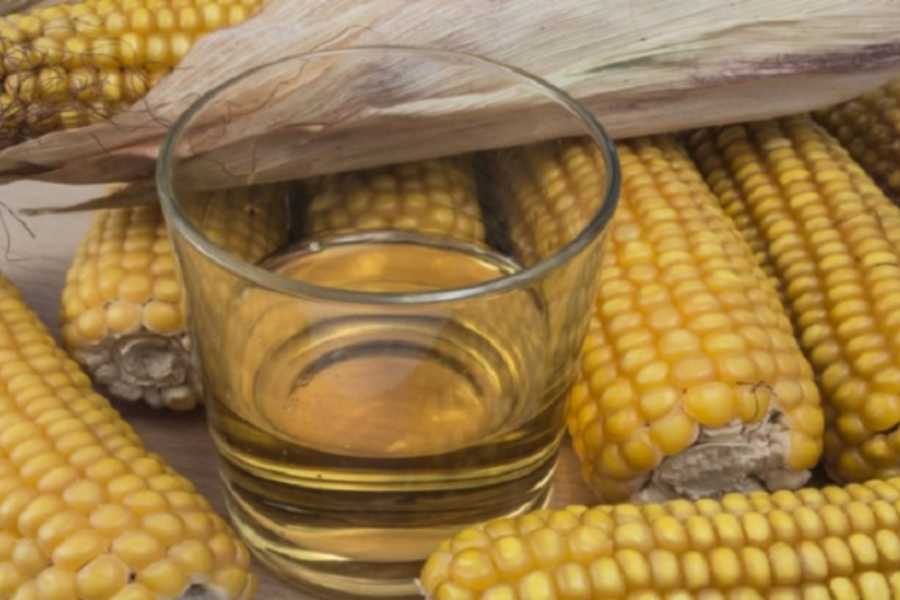
Herbal Teas from the Mountains
Sapa’s highland climate and biodiversity make it a haven for herbal teas. Locals brew teas from wild forest herbs, including artichoke flowers, cinnamon leaves, ginger, and dried flowers like chrysanthemum. These drinks are both soothing and believed to carry medicinal benefits - from aiding digestion to boosting immunity. Many homestays and local shops offer these teas as part of your meal, and you can also purchase packets of dried herbs at local markets to bring home. They're caffeine-free and deeply tied to traditional knowledge of the land.
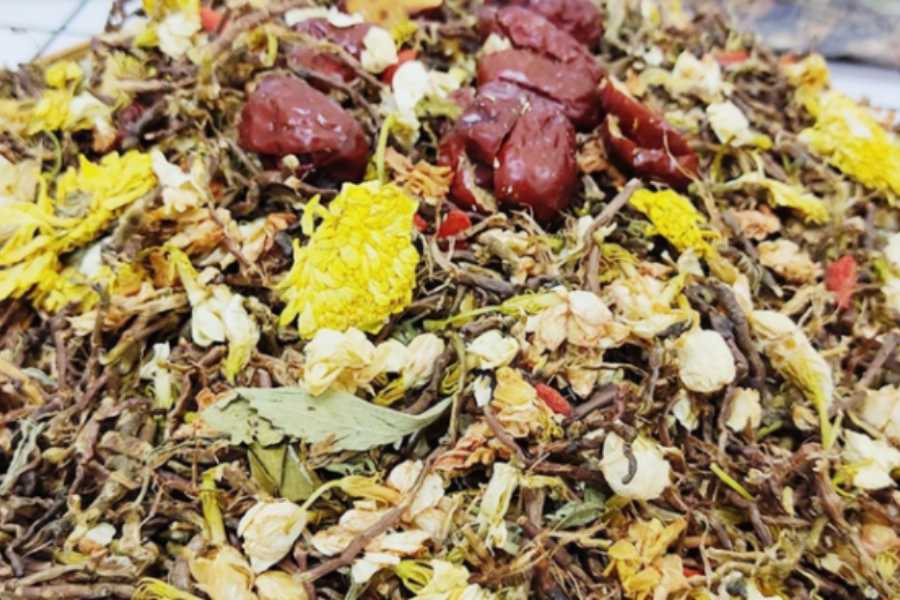
Coffee with a View - Hidden Cafés in the Hills
While Vietnam is famous for its coffee, Sapa adds a special charm with mountaintop cafés and foggy terraces overlooking rice valleys. Cafés like The Haven, Gem Valley, or Viettrekking offer rich cups of Vietnamese drip coffee or egg coffee paired with sweeping panoramic views. Tucked into the hills, these spots are perfect for a slow morning or a cozy afternoon during misty weather. Many are family-run and showcase local art or handmade crafts, making your coffee break both scenic and cultural.
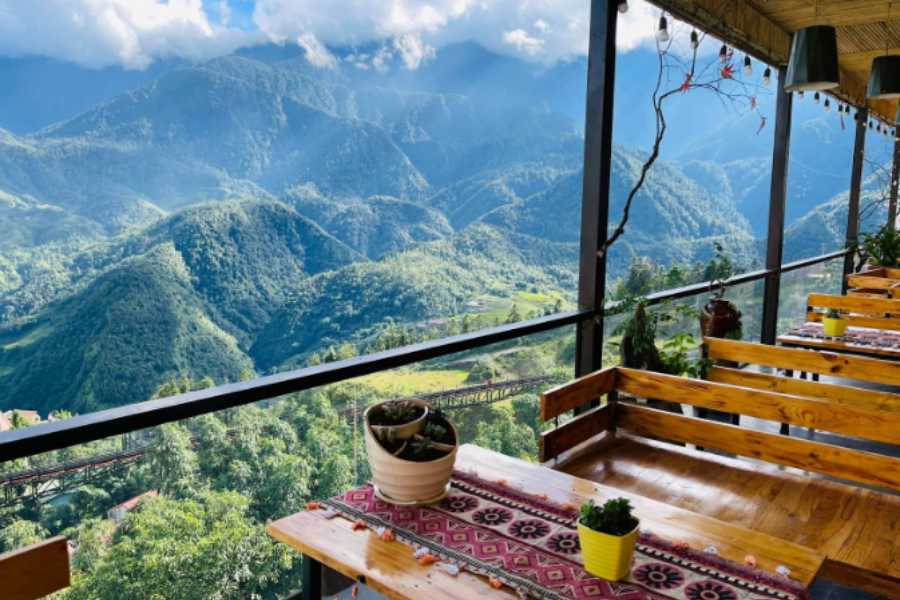
Responsible Eating in Sapa
Eat Ethically: Support Indigenous Families and Small Vendors
Choosing where and what to eat in Sapa can directly impact local communities. Prioritize meals at family-run eateries, market stalls, or homestays where ethnic minority families serve their own regional dishes. This not only provides a more authentic culinary experience but also ensures your money stays within the community. Many of these small vendors rely on food income to support their families and preserve traditional cooking methods. Look for places where locals eat, ask guides for recommendations, and don't hesitate to try a meal cooked over a fire in a simple wooden home - it's often the most meaningful.

Avoid Tourist Traps: What to Watch For
Sapa has grown more popular, and with that comes over-commercialization in some areas. Be wary of restaurants that only serve generic “Vietnamese” food without any local specialties, especially near central town squares. Many of these places are overpriced and disconnected from the region’s true culinary roots. Avoid buffets or eateries with heavily laminated photo menus and staff calling tourists inside - these are often built for speed, not quality or culture. Instead, opt for quiet, locally known spots or markets that serve seasonal, fresh food prepared in traditional ways.
Be Culturally Respectful When Dining in Homes
If you’re invited into a local home - whether as part of a tour or through a homestay - dining becomes more than a meal; it's a cultural exchange. Show respect by removing your shoes before entering, waiting to be seated, and joining in customary toasts or food-sharing rituals if invited. Don’t waste food, and always express appreciation even if the flavors are unfamiliar. In many homes, it’s common for the host to offer the best portions to guests first. A smile, polite nod, or even learning a few words in the local language (like “thank you” in Hmong or Dao dialects) goes a long way in honoring the gesture.
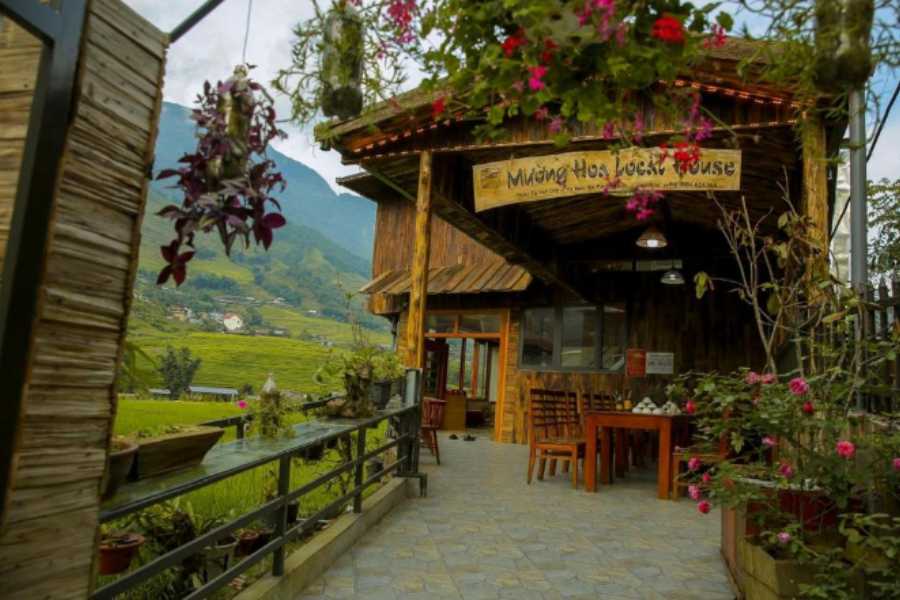
FAQs About Sapa Food Tours
Is It Safe to Eat Street Food in Sapa?
Street food in Sapa is generally safe - especially when you know where to go. Stick to vendors with high turnover (which means food is fresh), and look for locals lining up, a good sign of both quality and hygiene. Dishes like grilled skewers, sticky rice, and freshly made bánh cuốn are usually safe options. Still, it’s wise to avoid raw salads and ice in remote areas.
For extra peace of mind, consider joining a guided food tour with Threeland Travel. Our local guides know which stalls follow good food safety practices and can introduce you to hidden gems without the risk of a stomach ache.
Can Vegetarians or Pescatarians Enjoy the Local Cuisine?
While meat- especially pork, chicken, and buffalo- plays a central role in many traditional dishes, vegetarian and pescatarian options are increasingly available. You’ll find vegetable stir-fries, tofu dishes, steamed greens, and sticky rice with sesame. In some homestays or tours, you can even request plant-based versions of local meals in advance.
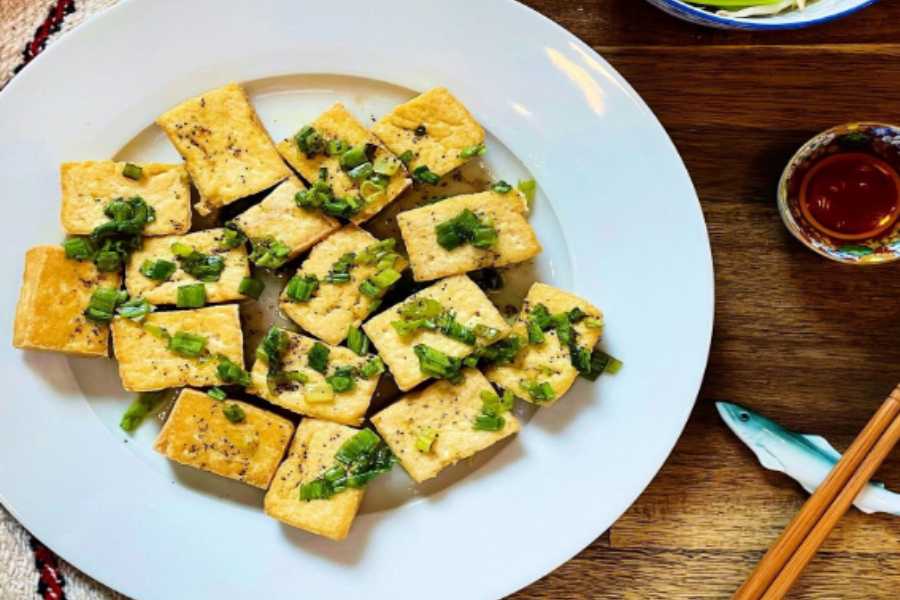
Threeland Travel food tours can be customized to accommodate dietary preferences. Our guides communicate directly with hosts and chefs to ensure your meals align with your needs- without compromising flavor or experience.
Do You Need a Guide or Can You DIY?
You can explore Sapa’s food scene independently, especially around markets and central streets. However, going with a knowledgeable guide adds depth: you’ll gain cultural context, taste dishes you might overlook, and even get invited into home kitchens or tribal-run eateries you wouldn’t find alone.
Joining a curated food tour with Threeland Travel means more than just tasting- it’s about connecting with people, understanding heritage, and supporting communities ethically. Plus, you'll avoid tourist traps and language barriers, making your experience smoother and more enriching.
Final Thoughts: Taste the Real Sapa
Why Sapa’s Food Is About More Than Just Flavor
Dining in Sapa is not just about satisfying your appetite - it’s about experiencing the rhythm of mountain life. Every dish tells a story of resilience, tradition, and connection to the land. From smoky grilled meats on bamboo skewers to bowls of herbal-infused hotpot, meals here are shaped by the seasons, the altitude, and the hands of ethnic families who cook with deep-rooted knowledge passed down for generations.
A Journey Through Culture, Identity, and Tradition
Sapa’s cuisine reflects its cultural diversity - where Hmong, Dao, Tay, and other ethnic communities each bring their own flavors, rituals, and ingredients to the table. A food tour here is more than a tasting adventure. It’s a journey through local identity and lived history. When you share a meal in a family kitchen or sip corn wine beside a wood-burning stove, you’re not just a visitor - you’re part of the story.
What to Pair Your Food Tour With (Trekking, Homestays)
For a truly immersive Sapa experience, combine your food exploration with other local activities, some of which rank among the best things to do in Sapa. Trekking through terraced rice fields offers a stunning backdrop to your culinary discoveries, while a night in a homestay deepens your connection with the people and places behind the meals.
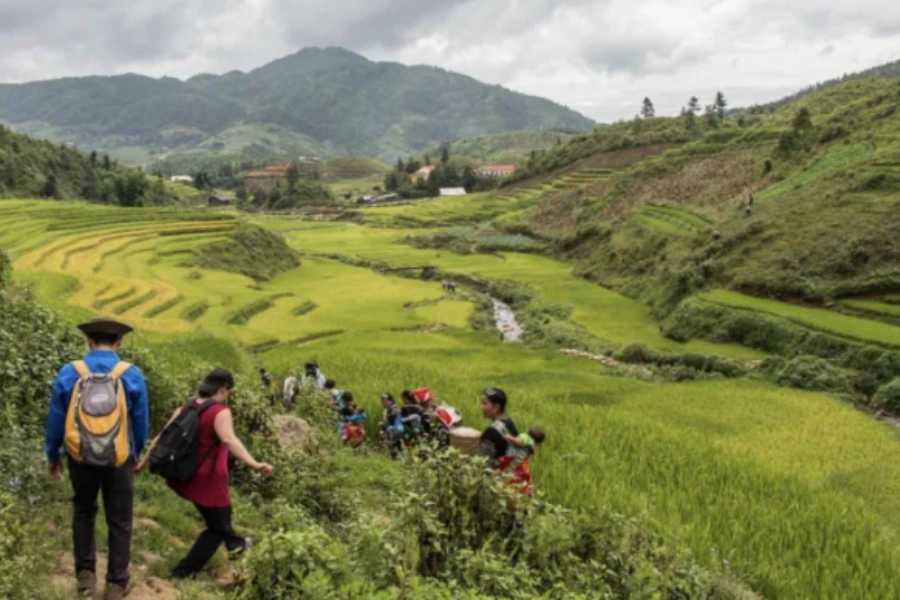 With the right itinerary – such as those offered by ethical operators like Threeland Travel or included in customized Vietnam holiday packages – you can blend flavors, landscapes, and cultural exchanges into one unforgettable journey.
With the right itinerary – such as those offered by ethical operators like Threeland Travel or included in customized Vietnam holiday packages – you can blend flavors, landscapes, and cultural exchanges into one unforgettable journey.










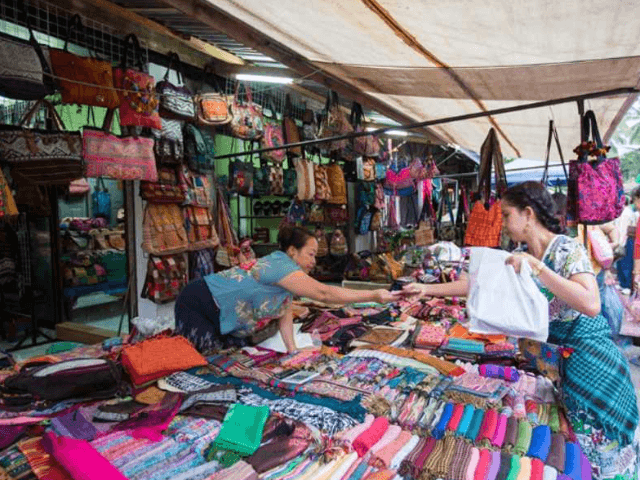

.jpg&w=828&q=75)